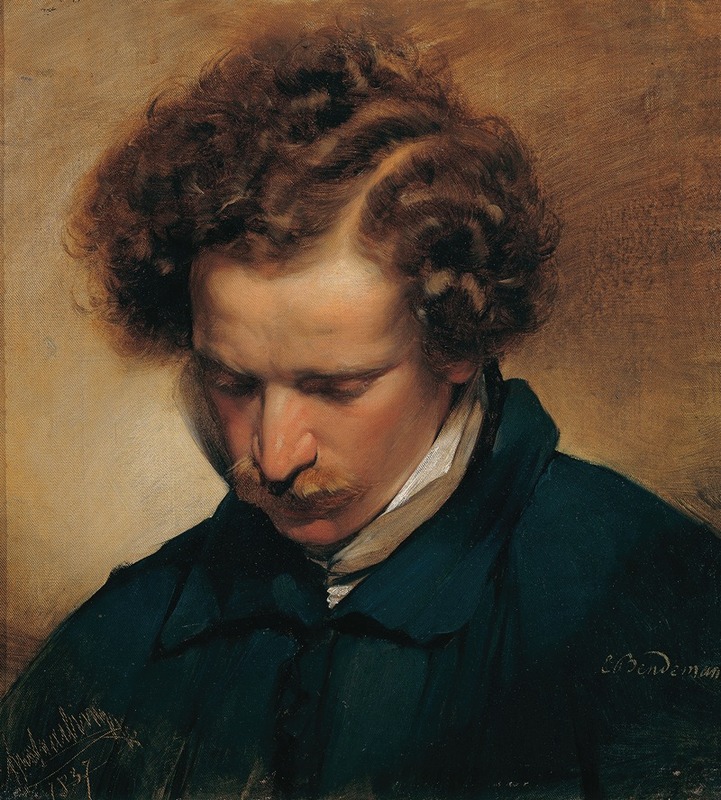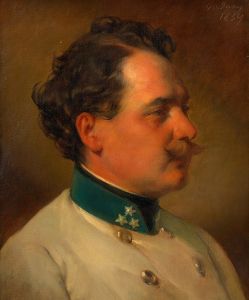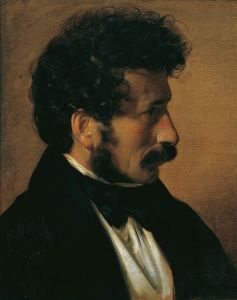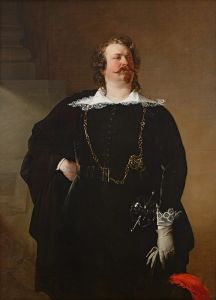
The painter Eduard Bendemann
A hand-painted replica of Friedrich von Amerling’s masterpiece The painter Eduard Bendemann, meticulously crafted by professional artists to capture the true essence of the original. Each piece is created with museum-quality canvas and rare mineral pigments, carefully painted by experienced artists with delicate brushstrokes and rich, layered colors to perfectly recreate the texture of the original artwork. Unlike machine-printed reproductions, this hand-painted version brings the painting to life, infused with the artist’s emotions and skill in every stroke. Whether for personal collection or home decoration, it instantly elevates the artistic atmosphere of any space.
Eduard Bendemann by Friedrich von Amerling is a portrait painting created by the Austrian artist Friedrich von Amerling, one of the most prominent portrait painters of the 19th century. The painting depicts Eduard Bendemann, a German-Jewish painter known for his contributions to the Düsseldorf School of painting. This work is an example of Amerling's mastery in capturing the personality and character of his sitters through meticulous attention to detail and a refined use of light and shadow.
Friedrich von Amerling (1803–1887) was a leading portraitist of the Biedermeier period, celebrated for his ability to render lifelike and elegant depictions of his subjects. His works often portrayed members of the aristocracy, bourgeoisie, and notable cultural figures of his time. Amerling's style is characterized by its clarity, precision, and a focus on the individuality of his sitters, which is evident in this portrait of Bendemann.
Eduard Bendemann (1811–1889) was a significant figure in 19th-century German art. He was associated with the Düsseldorf School, a movement known for its emphasis on historical and narrative painting. Bendemann's own works often explored themes of history, religion, and allegory, and he gained recognition for his large-scale frescoes and oil paintings. His artistic achievements and contributions to the art world made him a fitting subject for Amerling's portraiture.
The painting captures Bendemann in a seated pose, dressed in formal attire, with a contemplative expression. Amerling's skillful use of light highlights Bendemann's facial features, lending a sense of depth and realism to the portrait. The background is understated, ensuring that the focus remains on the sitter. This approach aligns with Amerling's typical style, where the emphasis is placed on the subject's individuality and presence.
The exact date of the painting's creation is not definitively documented, but it is believed to have been painted during the mid-19th century, a period when both Amerling and Bendemann were at the height of their careers. The portrait is an important historical artifact, as it represents the intersection of two prominent figures in the European art world of the 19th century.
The current location of the painting is not widely documented, and it is unclear whether it resides in a public collection, private ownership, or has been lost to history. Despite this, the work remains a testament to Amerling's artistic talent and his ability to immortalize his contemporaries through portraiture.
This painting serves as a valuable example of 19th-century European portraiture and highlights the cultural and artistic connections between prominent artists of the time.


















